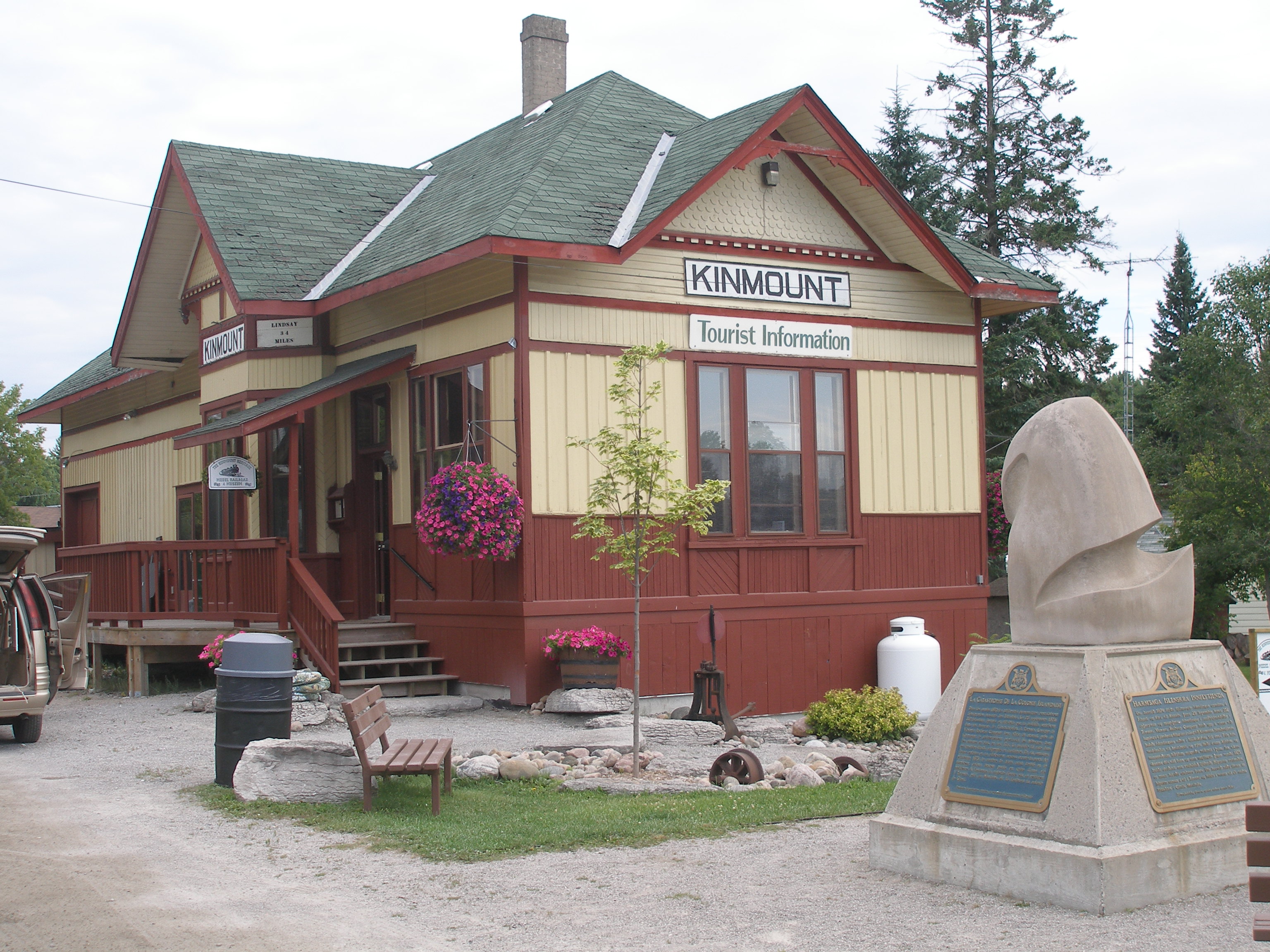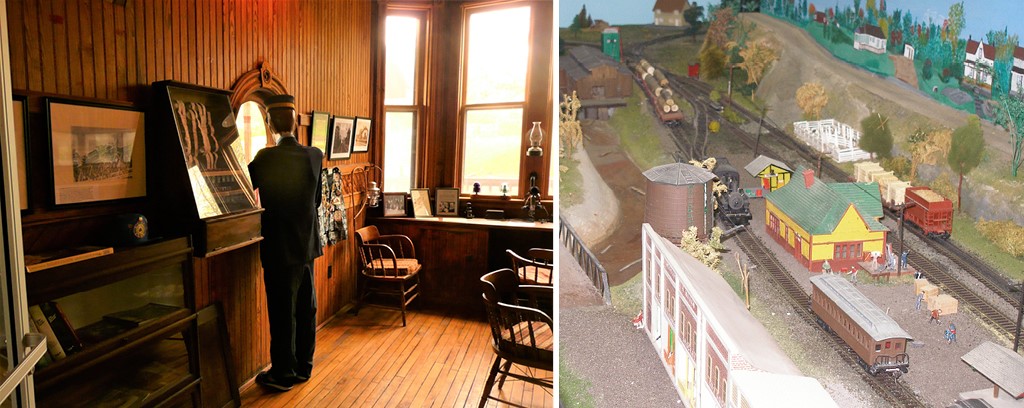Location: Kinmount
Date of Completion: 1876
Architect: N/A
Nominated by: Hon. Laurie Scott, MPP (Haliburton - Kawartha Lakes - Brock)
“Kinmount is likely one of the few villages where the railway line is inside the Station!”
- Guy Scott, local historian
With its brightly painted exterior and prominent location on the banks of the Burnt River, Kinmount’s former railway station is an unmissable and well-loved sight in this small town’s centre. A testament to the role of rail infrastructure in the development of this community, to this day, it remains an important node for its residents to connect.
A railway line with an important story
This former station was once a mid-way stop along the now-defunct Victoria Railway, a late-1800s railway connecting Haliburton to Lindsay. Primarily used for the transportation of raw materials, such as timber and other important resources, this route also acted as an important link between 12 communities, offering the hamlets it served opportunities for economic growth.
Like many train stations across Ontario, Kinmount’s station is simple in form. It also shares many characteristics with other stations along the same line—the result of being built from a common blueprint. The station’s contractor, Sir William Mackenzie, was a prominent railway entrepreneur of the late 1800s, who, among building other parts of the Victoria Railway—such as the station in nearby Fenelon Falls—partly owned the Toronto Street Railway (an early predecessor to the TTC). While humble in form and materials, Kinmount station is distinguished by its clever use of siding, featuring a variety of patterns that include board and batten siding, scalloped-patterned finishes, and other wall treatments. Finials likely once adorned the roof, adding to the ornamental qualities.
When the first train pulled into town in 1876, a large celebration was held as a way of marking the new beginning for this small settlement. And, while the town of Kinmount has fallen victim to large fires and floods over the years, the mighty little station has maintained its composure through it all.

Left: Passengers waiting for a train at the station in the 1890s. Right: Kinmount’s railway station stands tall (top left of image) after a devastating fire that ravaged the town in 1942. Photos courtesy of Guy Scott
A story of immigration
Like many other railways in Canada, the story behind the Victoria Railway is one of immigration and, more often than not, dire labour conditions.
At the time of the railway’s construction, Iceland was a country grappling with mass emigration, with many choosing to settle in Canada. A labour shortage during the construction of the Victoria Railway meant that hundreds of these new Icelandic immigrants moved into the Kawarthas to work on the line. A tragic tale unfolded, as the wooden shanties built to house the workers were overcrowded and poorly ventilated, leading to dozens of deaths (including children). Deciding that Kinmount would not be their new permanent home, this Icelandic community eventually resettled in what is now Gimli, Manitoba, as part of a scheme operated by the federal government in which “desired groups” were given plots of land to help colonize the northwest.
A small monument—the Icelandic Settlement Disaster Memorial, designed by sculptor Gudrun Sigursteinsdottir Girgis—now stands beside Kinmount’s station, a physical reminder of the hardship endured by these newly arrived immigrants as they worked to develop Canada’s infrastructure.

The front of Kinmount Station as it stands today. The Icelandic Settlement Disaster Memorial can be seen on the bottom-right of the image. Photo courtesy of Guy Scott
The Victoria Railway lives on
As was the case for many railways in the second half of the 20th century, the lines that used to pass by Kinmount fell into a steady decline and the railway was eventually abandoned. In the 1970s, the station was acquired by the City of Kawartha Lakes and has since played an important role adaptively reused a community centre, with the former station and surrounding site being hosts to a variety of events year-round. The building’s exterior has been restored, including a return to its original paint colours. Inside, the former baggage area is now home to a visitor’s centre, as well as a model of the Victoria Railway—a playful reminder of the building’s history that is carefully maintained by a group of local enthusiasts. As for the railway path itself, it too has been repurposed as a multi-use recreational space known as the Haliburton County Rail Trail and the Victoria County Rail Trail.

Left: The station’s interior has been carefully maintained and restored. Right: A model of the Victoria Railway showing Kinmount’s brightly-coloured station in the middle of the railway tracks. Photos courtesy of Guy Scott
Although it’s been more than half a century since the last train passed by Kinmount station, this building still acts as an important meeting place, a hub for a town, like many others in Ontario, where the railway played an important role in bringing opportunity, as well as linking the community to the wider world.
The OAA would like to thank Guy Scott, editor at the Kinmount Gazette, for his contributions to making this article possible.
This post forms part of our World Architecture Day Queen’s Park Picks 2020 series in which we asked Ontario’s Members of Provincial Parliament to nominate a prominent building, past or present, in their riding for a chance to learn more about it. Check out the rest of the series to learn more about great buildings across the province!